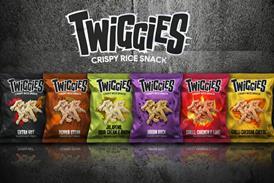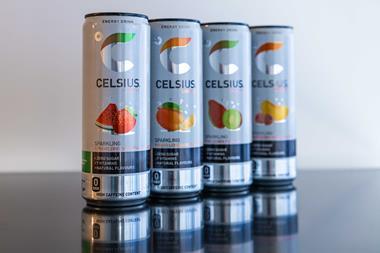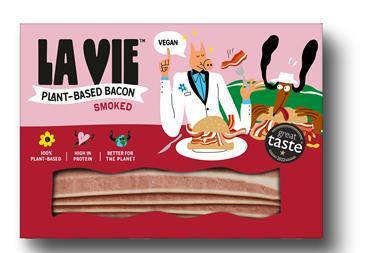Besieged poultry meat producers see their salvation in convincing consumers that the British product is the very best. But the path is a rough one, reports Vic Robertson
Poultry meat producers reckon they pulled off such a coup getting supermarkets to pay them more last year than they did the previous year that they are passing the hat round again this year. The motivation is pretty much the same: high feed prices due to wheat and soya shortages, more and more regulation and the growth of cheap imports.
But even if the major retailers do become more receptive to the British Poultry Council’s plea to increase prices, it is unlikely to stem the flood of mergers and acquisitions that have hit the industry in recent years. Although niche market operators linked to the RSPCA’s Freedom Foods and the Soil Association’s organic symbols are trying to buck the trend, mergers - most recently the acquisition of GW Padley Poultry by OSI, the US parent company of Moy Park - are par for the course these days. So what new pressures do poultry processors face and how should they handle them?
After four years of rapid growth, in which farm production has increased by two thirds to £17.5m, the organic sector is set to take another knock because UK derogations on organic production have ended. Under new EU legislation, organic poultry farmers will have to move to 100% organic chick stocking by the end of the year, which is expected to increase costs by 30p a bird. By
August 2005, they must have increased the amount of organically produced feed to 100%, which will again add to costs.
High welfare chicken, such as that produced under the Freedom Food label, appears to face an easier task, particularly as free-spending consumers are increasingly interested in buying produce that is humanely reared.
West Country producer Lloyd Maunder now supplies Devonshire White to Sainsbury and the corn-fed Devonshire Bronze to Somerfield under the Freedom Foods label. “We are doing our best to fight off the competition of cheap imports though we don’t believe this is going to be easy,” says a spokesman for Lloyd Maunder at the Devon show of the Bronze. “It depends on being able to convince consumers this is a better chicken, produced to higher standards which tastes better.”
In broader terms, this is much the same view of the industry taken by Charles Bourns, chairman of the National Farmers’ Union poultry board and of British Chicken Marketing, the promotional organisation set up jointly by the union and the British Poultry Council and backed by £750,000 of industry money.
“I am not against consolidation in the industry as long as we can sell more British produced chicken and get a fair price for it,” he says. “I know we are controlled by a very few people and they tell us to do things. But at the end of the day that is alright if you get paid for doing all the paperwork.”
Farmers who have been exiting the industry have tended to be those who supplied processors or packers that did not have contracts with supermarkets. The production side is naturally moving towards the grain production areas in the eastern half of the country and, with few exceptions, so is the rest of the industry.
“In spite of the amalgamations and consolidation, we are far from being a sector that is in decline. In fact, production has increased from 470,000 million chickens a year in 1986 to 840,000 million last year.
“But it is clear that we are going to have to keep on cutting production costs and improving efficiency throughout the chain as well as producing something that British consumers will prefer in the supermarkets. We are going to have to keep on telling them why British chicken is better.”
He accepts the fact that British producers face unfair industry competition in terms of the “gold plated” EU rules. But he urges the industry to “get off its backside” and tell buyers why British is best and fight for an increased share of the market.
British Poultry Council chief Peter Bradnock is more diplomatic. UK producers and processors must contend with higher costs due not only to food hygiene and animal healthy rules, which also impinge on exports, but also added environment and employment legislation costs, he says.
Supermarkets tend to claim they take these added costs into consideration, although the same might not be said of the foodservice sector.
But further consolidation, with occasional flights into deconsolidation as was the case with Two Sisters and Hillsdown, looks set to continue for the mainstream while smaller operators may well decide to head down the branding route.
The same situation applies to the turkey sector. Mike Bailey, a partner in Bailey’s Turkeys in Cheshire, used to supply Brandons, which went into receivership a year ago and was bought by Cranberry Foods, which in turn rationalised plant operations. On the other hand, he is competing with low cost imports from Brazil, Israel, Italy and some new members of the EU like Poland, Hungary and the Czech Republic, mainly in the catering sector. He admires the success of the British Lion mark in helping the egg sector regain and build its market share and wants to see the turkey sector emulate this success.
With one or two major industry exceptions, he and his supporters have achieved initial recognition of the British Turkey standards as a precursor to full Little Red Tractor status.
Primary producers are ready for the import and EU challenge and further consolidation. The last battle is to get the foodservice sector onside.
Poultry meat producers reckon they pulled off such a coup getting supermarkets to pay them more last year than they did the previous year that they are passing the hat round again this year. The motivation is pretty much the same: high feed prices due to wheat and soya shortages, more and more regulation and the growth of cheap imports.
But even if the major retailers do become more receptive to the British Poultry Council’s plea to increase prices, it is unlikely to stem the flood of mergers and acquisitions that have hit the industry in recent years. Although niche market operators linked to the RSPCA’s Freedom Foods and the Soil Association’s organic symbols are trying to buck the trend, mergers - most recently the acquisition of GW Padley Poultry by OSI, the US parent company of Moy Park - are par for the course these days. So what new pressures do poultry processors face and how should they handle them?
After four years of rapid growth, in which farm production has increased by two thirds to £17.5m, the organic sector is set to take another knock because UK derogations on organic production have ended. Under new EU legislation, organic poultry farmers will have to move to 100% organic chick stocking by the end of the year, which is expected to increase costs by 30p a bird. By
August 2005, they must have increased the amount of organically produced feed to 100%, which will again add to costs.
High welfare chicken, such as that produced under the Freedom Food label, appears to face an easier task, particularly as free-spending consumers are increasingly interested in buying produce that is humanely reared.
West Country producer Lloyd Maunder now supplies Devonshire White to Sainsbury and the corn-fed Devonshire Bronze to Somerfield under the Freedom Foods label. “We are doing our best to fight off the competition of cheap imports though we don’t believe this is going to be easy,” says a spokesman for Lloyd Maunder at the Devon show of the Bronze. “It depends on being able to convince consumers this is a better chicken, produced to higher standards which tastes better.”
In broader terms, this is much the same view of the industry taken by Charles Bourns, chairman of the National Farmers’ Union poultry board and of British Chicken Marketing, the promotional organisation set up jointly by the union and the British Poultry Council and backed by £750,000 of industry money.
“I am not against consolidation in the industry as long as we can sell more British produced chicken and get a fair price for it,” he says. “I know we are controlled by a very few people and they tell us to do things. But at the end of the day that is alright if you get paid for doing all the paperwork.”
Farmers who have been exiting the industry have tended to be those who supplied processors or packers that did not have contracts with supermarkets. The production side is naturally moving towards the grain production areas in the eastern half of the country and, with few exceptions, so is the rest of the industry.
“In spite of the amalgamations and consolidation, we are far from being a sector that is in decline. In fact, production has increased from 470,000 million chickens a year in 1986 to 840,000 million last year.
“But it is clear that we are going to have to keep on cutting production costs and improving efficiency throughout the chain as well as producing something that British consumers will prefer in the supermarkets. We are going to have to keep on telling them why British chicken is better.”
He accepts the fact that British producers face unfair industry competition in terms of the “gold plated” EU rules. But he urges the industry to “get off its backside” and tell buyers why British is best and fight for an increased share of the market.
British Poultry Council chief Peter Bradnock is more diplomatic. UK producers and processors must contend with higher costs due not only to food hygiene and animal healthy rules, which also impinge on exports, but also added environment and employment legislation costs, he says.
Supermarkets tend to claim they take these added costs into consideration, although the same might not be said of the foodservice sector.
But further consolidation, with occasional flights into deconsolidation as was the case with Two Sisters and Hillsdown, looks set to continue for the mainstream while smaller operators may well decide to head down the branding route.
The same situation applies to the turkey sector. Mike Bailey, a partner in Bailey’s Turkeys in Cheshire, used to supply Brandons, which went into receivership a year ago and was bought by Cranberry Foods, which in turn rationalised plant operations. On the other hand, he is competing with low cost imports from Brazil, Israel, Italy and some new members of the EU like Poland, Hungary and the Czech Republic, mainly in the catering sector. He admires the success of the British Lion mark in helping the egg sector regain and build its market share and wants to see the turkey sector emulate this success.
With one or two major industry exceptions, he and his supporters have achieved initial recognition of the British Turkey standards as a precursor to full Little Red Tractor status.
Primary producers are ready for the import and EU challenge and further consolidation. The last battle is to get the foodservice sector onside.
















No comments yet